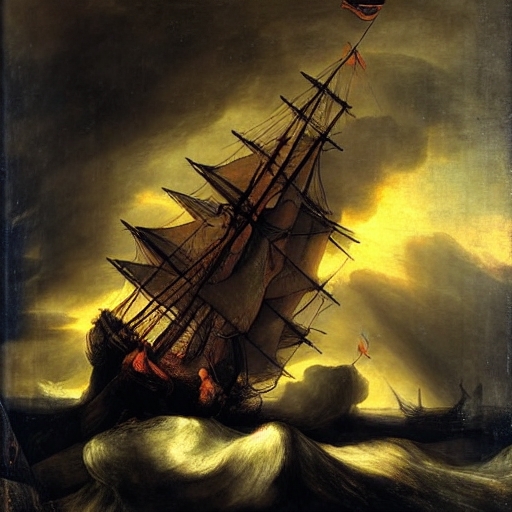OpenVINO
How to use OpenVINO for inference
🌍 Optimum provides Stable Diffusion pipelines compatible with OpenVINO. You can now easily perform inference with OpenVINO Runtime on a variety of Intel processors (see the full list of supported devices).
Installation
Install 🌍 Optimum Intel with the following command:
Copied
pip install --upgrade-strategy eager optimum["openvino"]The --upgrade-strategy eager option is needed to ensure optimum-intel is upgraded to its latest version.
Stable Diffusion
Inference
To load an OpenVINO model and run inference with OpenVINO Runtime, you need to replace StableDiffusionPipeline with OVStableDiffusionPipeline. In case you want to load a PyTorch model and convert it to the OpenVINO format on-the-fly, you can set export=True.
Copied
from optimum.intel import OVStableDiffusionPipeline
model_id = "runwayml/stable-diffusion-v1-5"
pipeline = OVStableDiffusionPipeline.from_pretrained(model_id, export=True)
prompt = "sailing ship in storm by Rembrandt"
image = pipeline(prompt).images[0]
# Don't forget to save the exported model
pipeline.save_pretrained("openvino-sd-v1-5")To further speed up inference, the model can be statically reshaped :
Copied
In case you want to change any parameters such as the outputs height or width, you’ll need to statically reshape your model once again.

Supported tasks
text-to-image
OVStableDiffusionPipeline
image-to-image
OVStableDiffusionImg2ImgPipeline
inpaint
OVStableDiffusionInpaintPipeline
You can find more examples in the optimum documentation.
Stable Diffusion XL
Inference
Here is an example of how you can load a SDXL OpenVINO model from stabilityai/stable-diffusion-xl-base-1.0 and run inference with OpenVINO Runtime :
Copied
To further speed up inference, the model can be statically reshaped as showed above. You can find more examples in the optimum documentation.
Supported tasks
text-to-image
OVStableDiffusionXLPipeline
image-to-image
OVStableDiffusionXLImg2ImgPipeline
Last updated